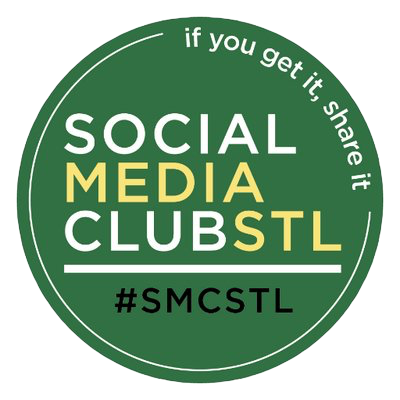The Midwest Digital Marketing Conference recently took place on the campus of the University of Missouri St. Louis. Board member Posy Lou attended on behalf of the Social Media Club St. Louis.
Session Offerings
The conference included a single track this year – one session following another without competing sessions. These topics included leveraging the power of influencer marketing, mastering TikTok, marketing in the metaverse, post-pandemic B2B marketing impacts, and the future of digital paid advertising.
I enjoyed every session I got the opportunity to attend, but the conference had such a strong start that I feel I’d be doing a disservice if I didn’t do a deep dive on the kick-off session featuring the following panelists:
Alicia Underwood - Co-Owner + Director of Digital Strategy at Socially Inspired
Danielle Smith - Lifestyle Entrepreneur & Founder at PrettyExtraordinary.com
Marisa Lather - Director of Marketing and Communications at Bridge Partners
Ryan Green - VP, Marketing & Innovation at Coegi
Lindsey Gamble - Associate Director of Influencer Innovation at Mavrck
Leveraging the Power of Influencer Marketing
This panel included influencer marketing specialists and influencers themselves. They discussed the process of finding the right influencers for a brand/product/industry, measuring the results of influencer campaigns, and integrating influencer marketing into your marketing mix.
What is the first step to beginning an influencer marketing campaign?
As a Director of Digital Strategy, Alicia Underwood mentioned starting with the objective of the campaign by identifying one key outcome or focus, like driving sales or increasing visitors to your website. Ryan Green, VP of Marketing & Innovation, piggy-backed on that by highlighting that there is patience in goal setting when you focus on the long-term – “The long-tail lens is what creates a worthy return.”
Green recommends that once a campaign kicks off, it should span over the course of at least three to six months in order to gain worthy results that can actually prove what is or isn’t working. One-off posting is not recommended by influencer Danielle Smith, which leads us into our next section.
Things to Avoid
The entire panel pretty much answered in agreement that creators should have the freedom to create what works for them and their voices without restrictions or strict requirements. Rather than a production, Green recommends thinking of it as a partnership.
Considering the aspects of partnership, Underwood mentioned valuing your influencers, “They are their own business. We are buying media space in their channels.”
Assoc. Director of Influencer Innovation Lindsey Gamble also made a great point, “We reach out to influencers because we have an audience that we can’t reach. Trust creators, and as they run a few campaigns, evaluate and assess from there.”
Campaign measurement and influencer compensation should start with industry benchmarks. Gamble mentioned working to create your own baselines and benchmarks from there as well. Compensation is challenging when it comes to different industries and rates, but having a willingness to negotiate and keep an open mind is crucial to securing the right influencer for your brand.
Influencer Marketing in B2B
Influencer marketing is much more commonplace when it comes to Business-to-consumer (B2C) marketing. Director of Marketing and Communications Marisa Lather said that it may not be tapping into people using makeup or buying Starbucks, but it’s finding people who are credible voices to rep the brand. Business-to-business (B2B) influencer marketing is possible.
Gamble mentioned that influencer marketing is very untapped in the B2B space. He recommends looking to influencers as methods of research and an extension of your team.
Creator vs. Influencer
As the panel began winding down and closing out, they touched on the difference between creators and influencers. “With more people being creators, we will see an elevation of content that will trickle down to influencers and force them to take more ownership in the campaign development process,” said Lather.
“I use the word ‘creator’ a lot. I don’t like being called an influencer. Influencers have an audience, while creators create something,” Gamble. He also mentioned the power of short-form video, allowing anyone to be a creator. With the right tools and technologies available, we have more opportunities, “Long-form content will be the differentiating element.”
Something I’ll leave you with – as it was my favorite takeaway from the panel – “Take the ‘r’ off of influencer and call it Influence Marketing. Quit looking at it like a noun and consider it as a verb,” stated Marisa Lather.
Influence is something many of us have without even realizing it, from where we go out to eat or shop, who we follow on social media, what we buy, or how we spend our free time. We promote these things on social media, and those in our circle of influence often follow suit.
It’s what we do. People like to belong. Influencer marketing, or influence marketing, is not a new concept, but the monetization and empowerment of creators who wield large amounts of influence will continue to pave the way for brands that want to gain more reach and tap into new audiences.
Source: Photo by Liza Summer https://www.pexels.com

